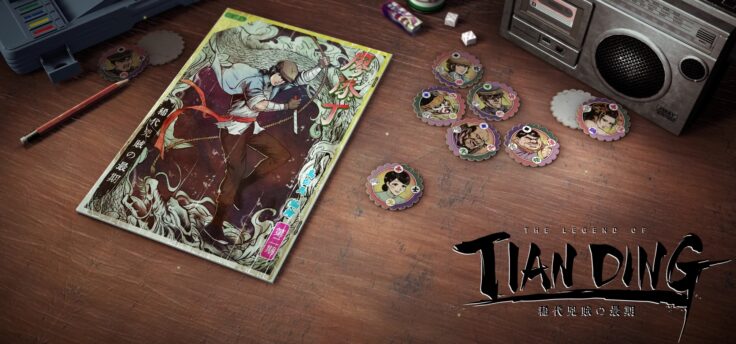The Legend of a Taiwanese Robin Hood
Type: Single-player
Genre: Metroidvania
Developer: Creative Games
Computer Graphics
Publisher: Neon Doctrine
Release date: 2 Nov, 2021


97% Overwhelmingly Positive on Steam!
The Legend of Tianding is a fantasy retelling of the famous Taiwanese figure Liao Tianding who is commonly known to have played a part in fighting against the oppressive Japanese rule at the beginning of the 1900s. Supposedly, it’s a remake of a 2004 Flash game made in cooperation with the original developer that got a lot of nominations and awards as an indie game. Does this 2D Action Sidescroller live up to the Legend?
Taiwan under Japan’S Rule
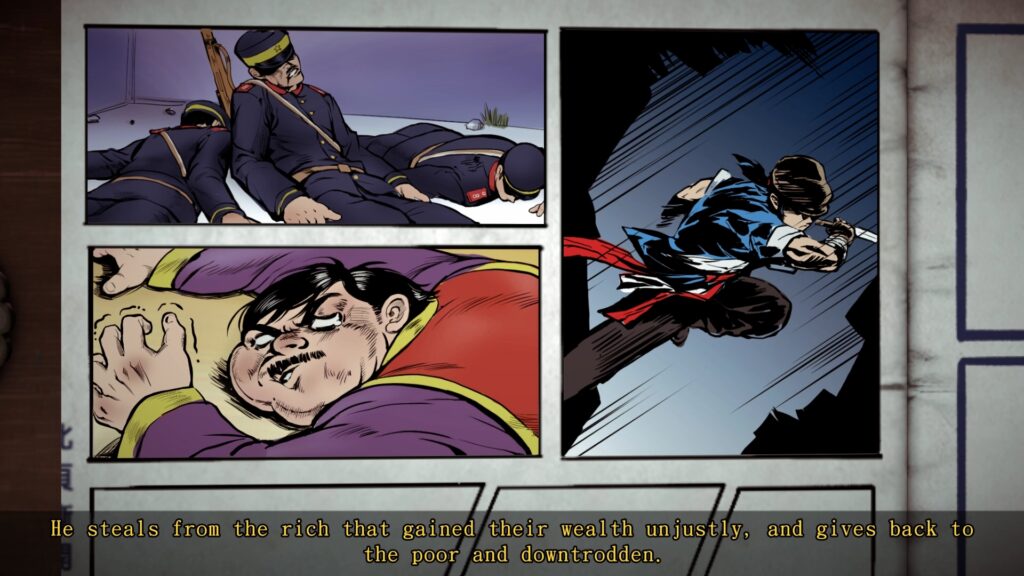
The story immediately starts with introducing Liao Tianding as a well-known figure who robs the rich and gives them to the poor, though there seems to be a time where he was gone for a little bit. This game marks his return to the scene after training in the mountains, mastering Martial Arts, and turning him into a legendary thief or hero.
Right at the start he helps someone out and gets his hand on a mysterious plaque. The now-former owner tells him that it either brings fortune or disaster… It turns out that there’s much more to it than initially thought, which also involves a ruthless Japanese soldier who’s also after the secret that lies behind it.
Overall, it’s a short story that comes with one or two twists and turns.
Though it’s a story that uses the historical figure Liao Tianding, it’s mostly in name only as it’s closer to a typical over-the-top comic hero rather than being historically accurate, which isn’t a bad thing. This version of Liao Tianding is a Martial Arts master and master thief to enable the fantastical gameplay.
It shows some of the tyrannical rule and discrimination but also has a contrast the Japanese police officer Matsumoto who tries his best to do his job and trying his best to take care of all the citizens regardless of where they come from. Which leads us to the characters. A lot of them are just supporting casts used for some specific plot points.
.
Only a handful take the spotlight like Tianding, Matsumoto, and the main villain. Tianding is a typical hero who tries his best to help his fellow citizens, while the main villain shows his strong capabilities very early on to show that he’s a real menace who’s able to stand toe to toe with Tianding’s skills.
Another more notable thing is the different endings. Depending on whether you have successfully activated specific flags via sidequests or challenges you get a good or bad ending. The good ending is pretty easy to get and isn’t tied to the difficulty.
The Gameplay
At first it seems like a Metroidvania but it’s not. It’s a linear game that uses the city as a hub that leads to the story specific dungeons with a lot of fighting and some platforming.
Basic Controls
The first thing you see at the startup is the recommendation to play with a controller as it’s developed with it in mind. Though the controls are very simple, one particular move benefits from the Analogue Stick vs the Keyboard.
There’s one attack button that strings together a 3 hit attack sequence, a special button that unleashes a special attack depending on the direction you push, and of course the classic jump. Later on, you get to unlock an air jump.
For those who’re not happy with the standard configuration, you can set things up to your liking in the options.
Spiderwire
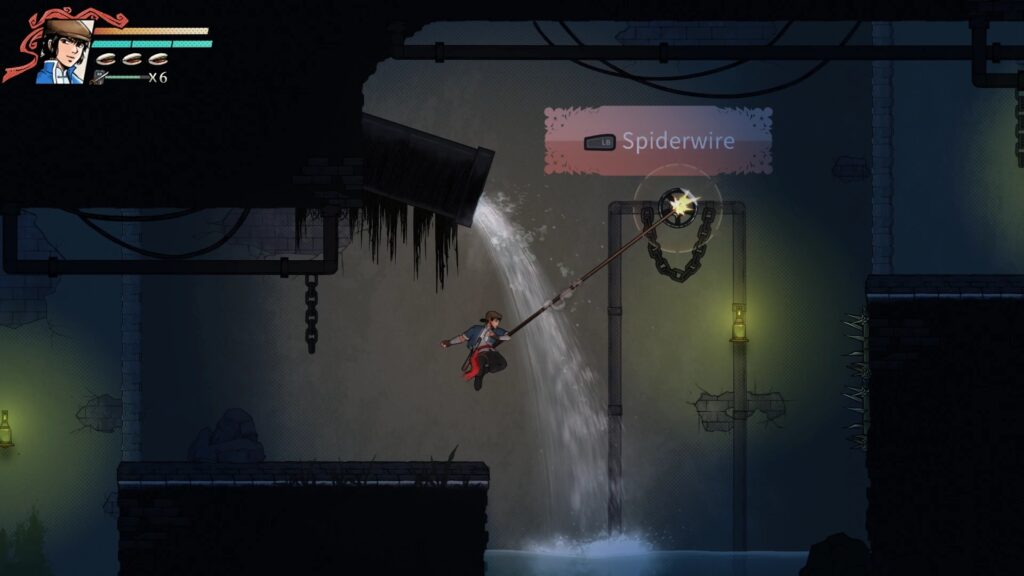
A special movement pulls you toward specific anchors and is used for jumping puzzles. Sometimes you can also target birds with it and on a particular level, they can even carry recovery items so make sure you keep a lookout for a bag on their beaks.
The City
The city works like a hub where you move around to go to the next objective. It’s easy to traverse and even has Fast Travel points to reduce some unnecessary walking. There’s not that much to do though. You can find some sidequests that are marked on the Map, spend some money on upgrading your weapon, or increase the limit of dumplings you can hold. This includes the RNG homeless lottery where you donate a little bit of money in exchange for random collectibles that gives you a slight permanent buff.
It also makes exploration worth it because you can sometimes find special items on the rooftops.
Collectables
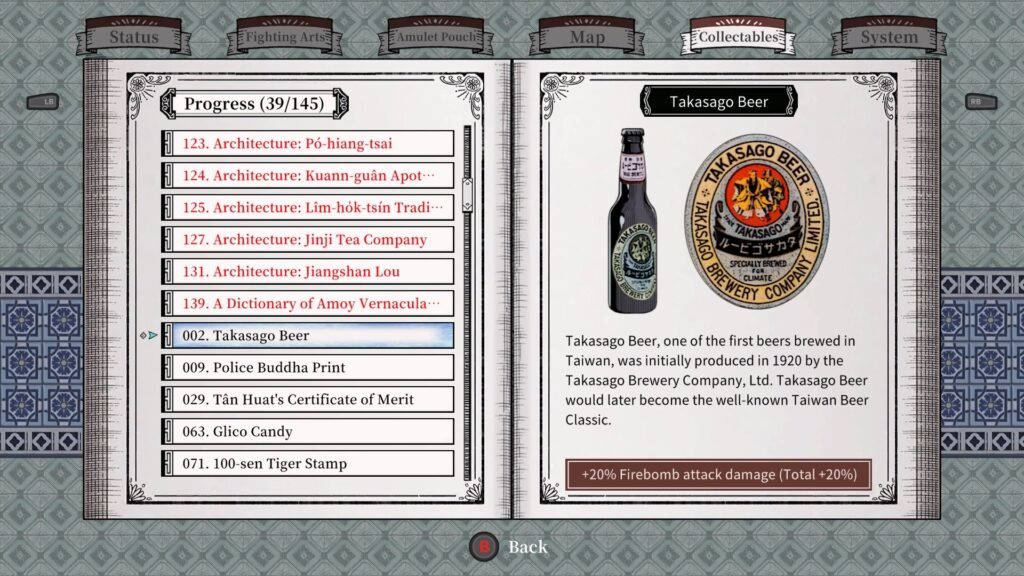
There are 145 collectibles to be found. Some are hidden inside dungeons, while others are Towel drops from enemies. All of them are viewable with some additional trivia at the collectables tab and it seems like they contain real facts like Takasago Beer being the first beer brewed in Taiwan.
Most importantly, they give you special permanent buffs like increased damage for specific weapons, increased weapon endurance, and more. It doesn’t make a big difference at first but it becomes more apparent the more it piles up.
Sidequests
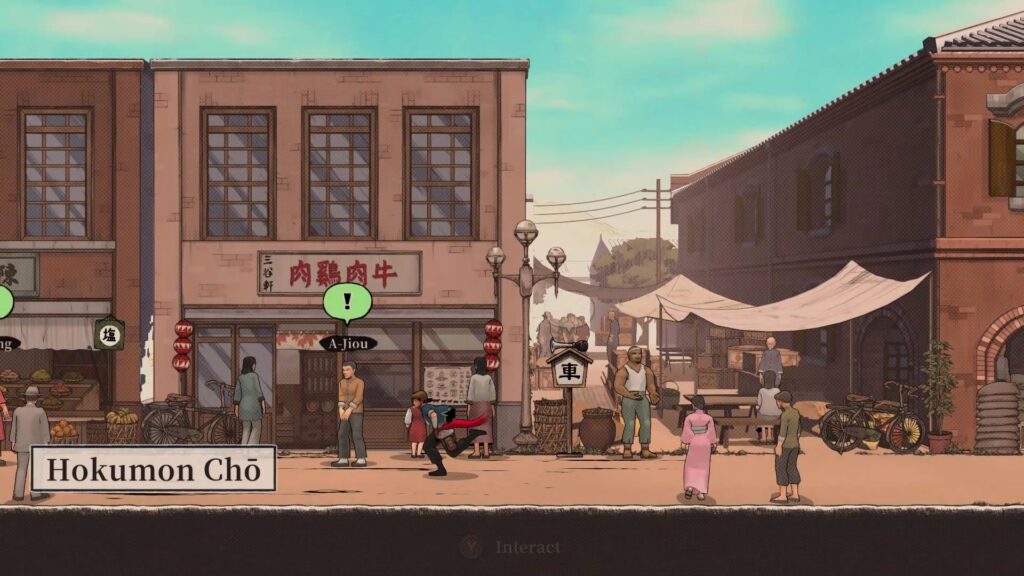
They are all optional as the name implies but some are required for the good ending. Some of them are simple fetch quests that require you to find special items in the dungeons. Most of the time you can even find some of them before you get the quest so if you are thorough with your exploration you can keep the backtracking to a minimum.
It’s important to note that there’s no need for backtracking for the sidequests that are required for the good ending.
Four Color Cards
It’s a special mini-game where you can either win or lose money. There’s not much I can say about it since I didn’t have much idea how to play it despite there being a short tutorial.
Talismans
Or also called Amulet Pouches. These are special equipment that you get from treasure chests or completed sidequests. They offer special attributes such as damage reduction, increased invincibility after a hit, and most notably the second air jump. The limitation lies in the weight represented by the weight icons. At first, you’ll only be able to wear one or two but you can get optional upgrades that increase the limit.
Dungeons
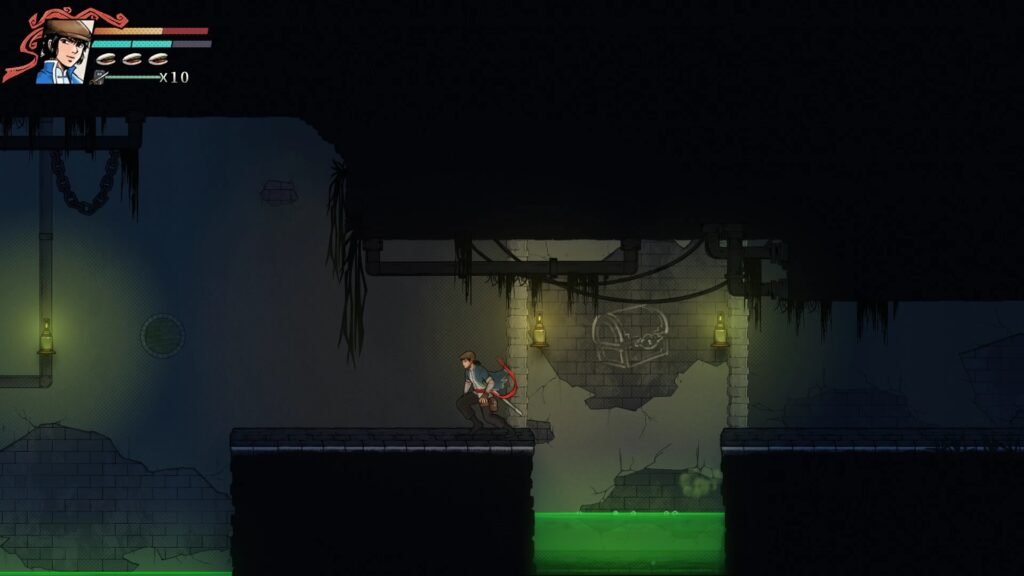
These are linear but often split up into two branches. One leads to the next objective and the other leads to a treasure chest. The good news is that there’s a special sign that shows you that treasure chests are just ahead and once you got it the symbol gets crossed out. Therefore, the best course of action is to go a little bit of each way and look for it before continuing onto the main objective.
Some dungeons do feel very long and overstay their welcome but that’s only a minor issue. There’s also the narrative issue as you can feel that these dungeons work like a filler. If you were to cut them out, it wouldn’t make a difference in terms of the story. They are just there for gameplay purposes.
Reliving Memories
Missed something? There’s a special character hanging around at the beginning where you go through the tutorial. It’s also the place to revisit certain dungeons or bosses. It also shows the number of treasures in each section and the amount you’ve already found.
Combat
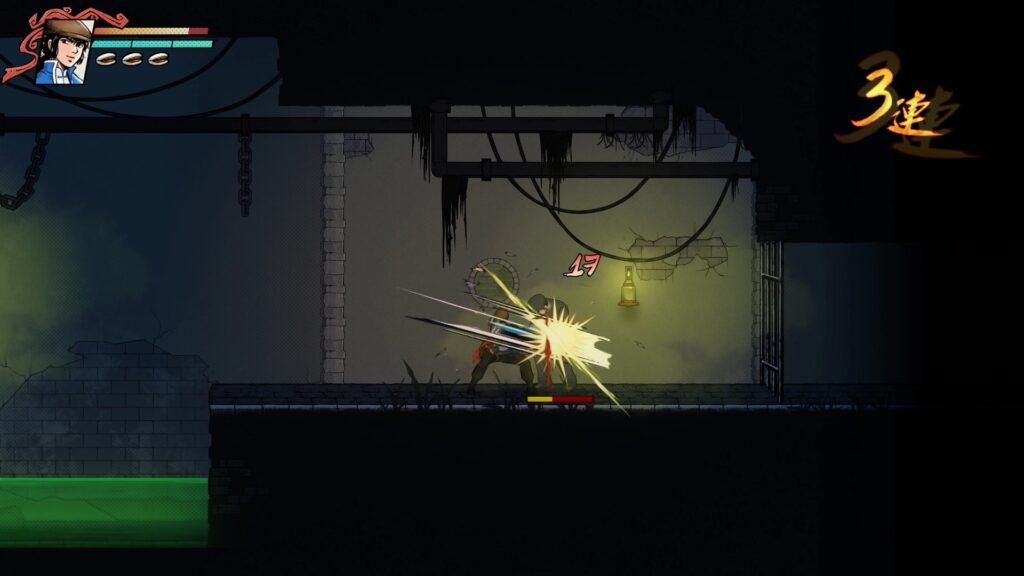
The combat is rather straightforward with special moves that require a fast recovering stamina gauge and dumplings that work like Dark Souls Estus Flasks, i.e. you use them to recover health but put you into a short vulnerable animation of eating.
Dodging (Air OK)
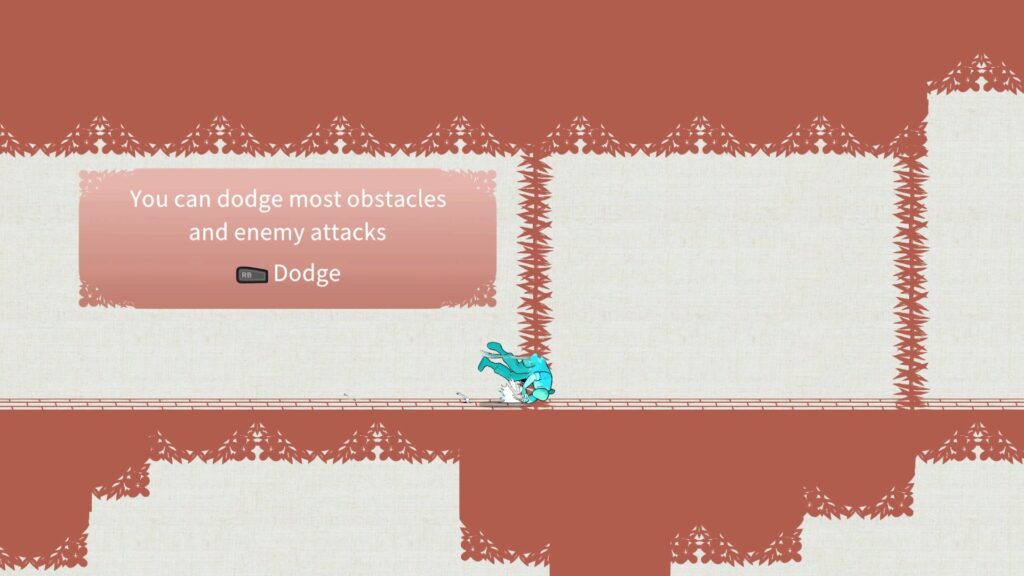
This is the only defensive option you have outside of mobility. Attacks that have a red glow can’t be dodged. You can dodge at any time while attacking, which makes it very strong as you can freely attack your opponents and simply react to their telegraphed attacks.
The dodge on the ground is a fast roll, while it’s a spin in the air that doesn’t change your trajectory. It’s important to mention that if you hit the air dodge close to the ground, you automatically switch over to a ground roll. This is very bad, especially when you’re close to the edge of a platform. It’d have been nice if there’s an additional input mechanic that prevents this from happening as I did have a few unfortunate moments due to this.
The perfect dodge will get unlocked later on and will provide you with a shadow that clones your attack and therefore acts as an attack buff. You’ll unlock another perfect dodge action even later but let’s not spoil things but you can only have one of them active.
Stealing Weapons with the Towel (Standard: Y-Button on Xbox Controller)
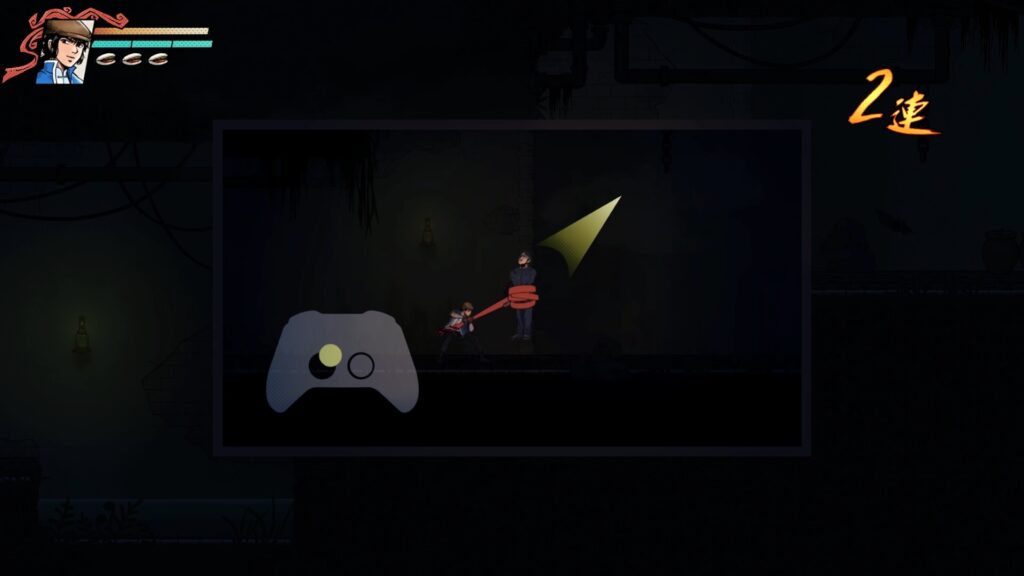
One of the most unique things about the combat is the capability to steal the enemy’s weapon via a unique mechanic. You’ll see a button prompt above the opponent’s head after a few hits and when you push it Tianding sends out his ribbon that does two things. You can control the direction they are flying and you steal their weapon for immediate use. You can make them drop buff items on rare occasions.
This mechanic enables a little bit more control over the battlefield. Put them into the air for some extra air combo or immediately knock them down for a breather.
Weapons
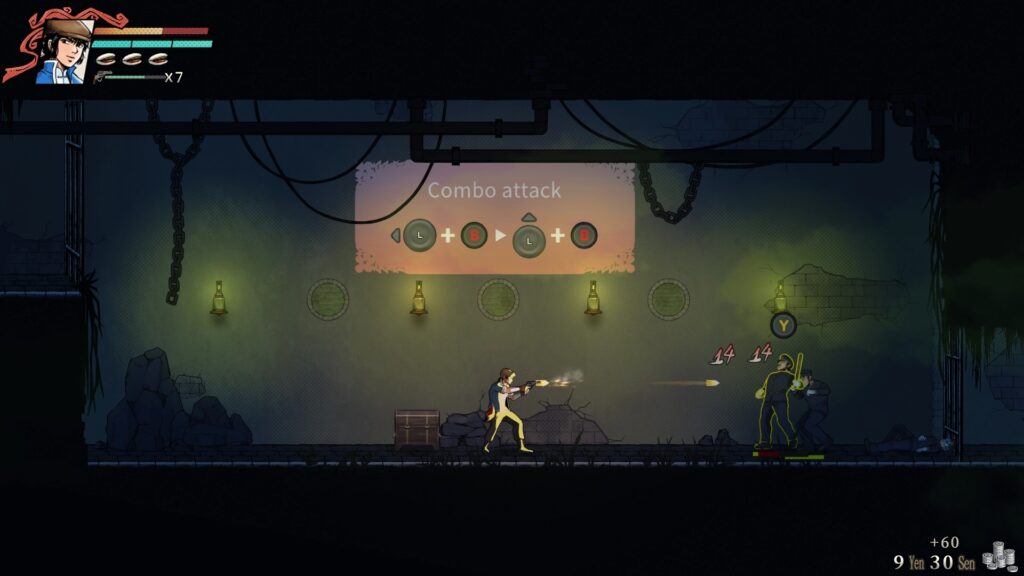
It’s not possible to store weapons. Once they are in your hand you either deplete them or drop them at the touch of a button. The good news is that they are strong and offer more variety in combat. Sticks knock the enemies down in very few hits, swords are a mix of fast and medium strength and Axes are slow but pack a punch.
The best ones are Projectiles. Rocks are weak spread shots and handguns are also weak but still better than your normal attacks. Molotov cocktails are nice but there are two that stick out in particular: The Single Shot Rifle and the Rocket Launcher. The Rocket Launcher hits the hardest and does some AoE damage, there’s no time where you wouldn’t want to hold that weapon close to your chest.
The Single Shot Rifle doesn’t do as much damage but it pierces. Line all the enemies up and you damage them all in one attack, which is very often.
Fighting Arts and Stamina (Direction + B-Button)
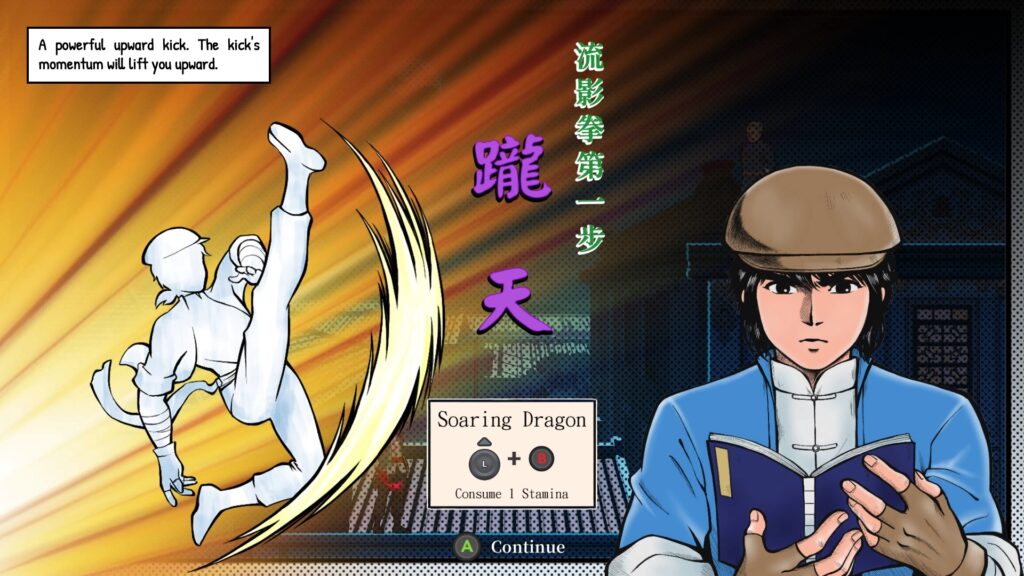
In the beginning, you get a slight vibe of the Metroidvania genre because each of these Fighting Arts is not only offering new attacks but also functions as a new movement option. An upward kick and a sideway kick give you extended reach. The one-inch punch is a little bit different as it doesn’t have a mobility function and is used to slam your opponents away and is best used to push them towards traps like spikes.
The stamina gauge recovers so fast that it’s pretty much a non-issue. Just wait one or two seconds and it’s full again.
Enemies
You can already see what kind of enemies are awaiting you from the Weapons section. Most of them can take a few punches before they start flinching. Most of them aren’t dangerous when they are alone but things will get heated in combat areas when they come in masses and turn up the heat. The smart use of weapons and combat mechanics are going to be important if you play it on the harder difficulty.
Sometimes you’ll meet a buffed-up version of the normal goons that have much more health.
Bosses
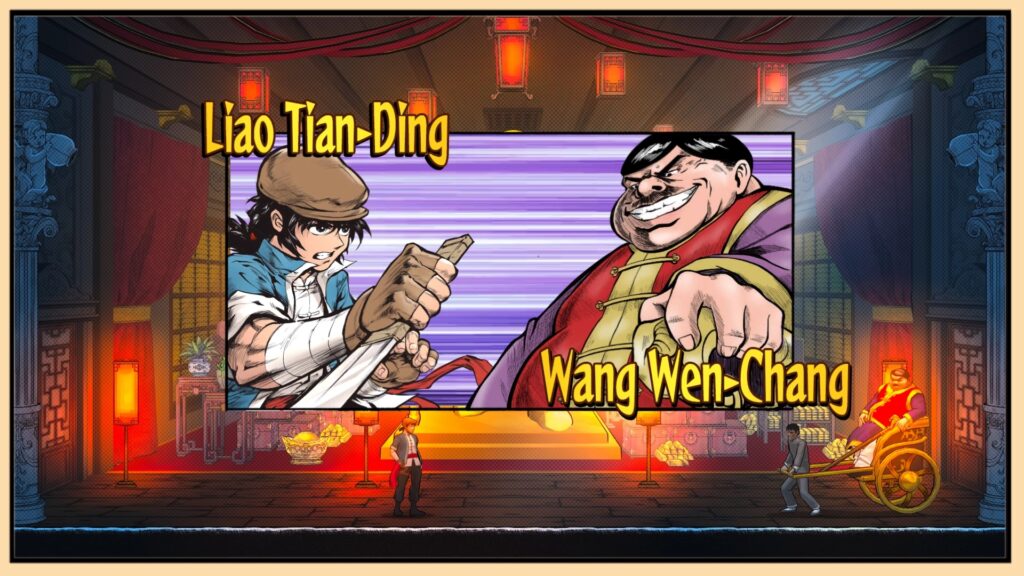
They are very strong and have multiple phases. Certainly the most challenging part of the game. They hit hard and have a bag full of tricks. Once you start to get used to them and manage to reduce their HP, they start to add something new to their arsenal. As always, it should be possible to defeat them without taking damage as long you put in the effort.
Another good news is that they all have unique move sets, which means they won’t resemble any of the normal mooks. An assured fresh experience with every boss fight.
Gameplay Impression
The Legend of Tiandong offers a very well-thought-out gameplay package that doesn’t overstay its welcome with about 5 hours of playtime. There’s nothing negative that’s very noticeable, which makes it a very smooth experience across the board. Even the encounter design gave me no signs of frustration. Some jumping puzzles might be a little bit more challenging but none of them feels unfair.
The length of the main story is on the short side but there’s still some postgame content if you want some more. Not to forget, there are also sidequests, collectibles, and a second ending. There are easily more hours of playtime to be found if you’re inclined to do so.
Graphics and Sound
It uses simple 2.5D graphics with medium detail and is nothing special on a technical level. Where it shines is the visual design and presentation. The city is full of the unique old-school Taiwanese architecture and atmosphere, showing off a very rare setting. The story presentation utilizes a manhua/comic style with panels for the more important parts and fits perfectly for their intent. The recap at the end of each chapter is also a nice little extra.
The sound design is ok and you can hear each attack hitting hard. Just like the visual design, the music also shows its strength due to sticking to its unique culture and thus delivering an authentic audiovisual experience.
There is voice acting but it’s very limited. It’s curious but I don’t think they are using the usual Chinese mandarin language but rather a Taiwanese dialect.
Verdict
The Legend of Tianding is a good game with a simple but engaging story. It doesn’t leave much place for complaints and shows its strength via the unique presentation that just works. Though the story playtime of ca. 5 hours might seem a little bit short. Sometimes it’s simply better to offer a short but sweet experience, instead of prolonging it too much. The pricing of 19.99$/€ is a good choice though I can imagine that some would rather wait for a sale due to the playtime.
Despite all of its positives, there’s nothing that makes the game pop out, which is why I give it a Save.
Does it mean that the Overwhelmingly Positive is not warranted? Not at all. The best way to describe it is that’s a people-pleasing enjoyable game. There’s nothing that makes one hate it but also doesn’t overly excel at anything. It’s simply a good game.

